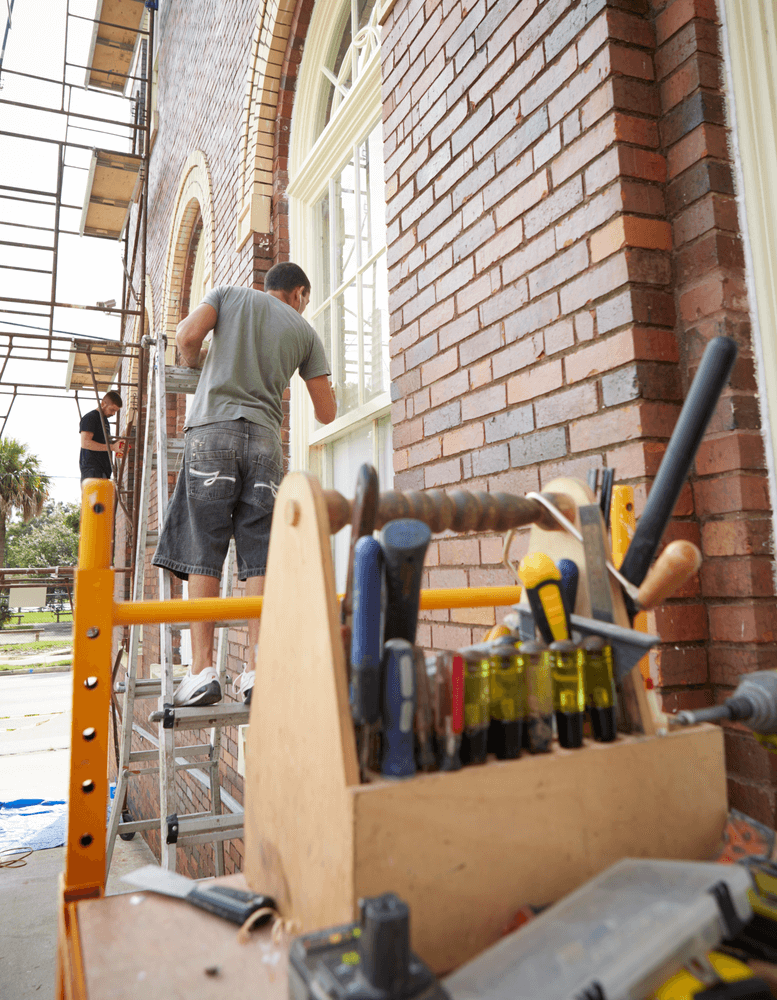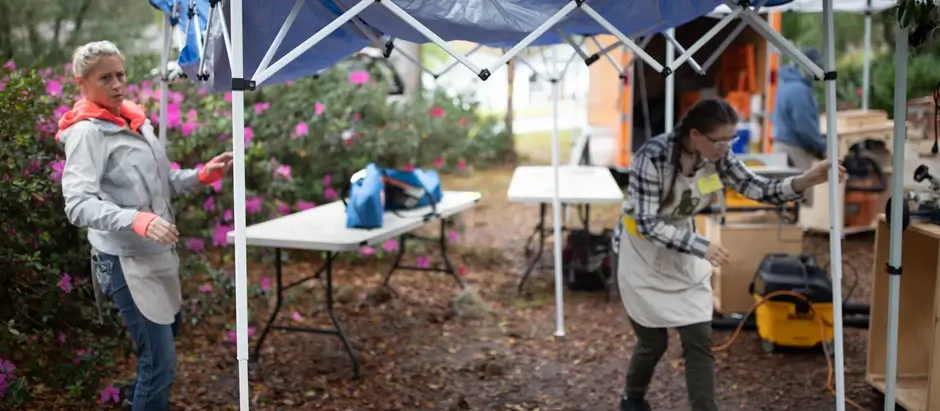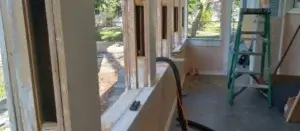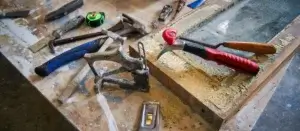The secret to excellent execution is an excellent set up. A worker may wind up with an excellent result every now and then, but for one to consistently achieve excellence, that excellence will only happen within an intentional framework and a proper set up.

Every experienced painter will tell you that applying a topcoat is the easy part. It’s the hard, behind the scenes prep work that outsiders pay no attention to that makes the difference. The painter’s goal is indeed to apply an excellent final topcoat, but that will only happen with the proper set up.
Every job takes a certain, minimum amount of work to bring about the desired reality. The job can also take much much more work, unnecessarily, especially when those who would do the work fail to organize themselves, and ultimately the subsequent work, properly.
One may say, “I’m not good at organizing projects.” Yet that same person will have a toolbox where the tools go. This indicates at the very least, on a basic level that the person has some sense of organization, even if on a rudimentary level.

Why do people have a tool box? Many reasons. One is to gather and sort similar and related tools into one space. I complained to my first carpentry employer how heavy his tool box was. He replied, “well I suppose you could empty it out and walk every tool one by one.” Point taken.
You have a battery impact driver. Where do you keep your screw tip? With the gardening tools? Obviously not. More likely close to the driver itself to facilitate efficient screw driving ability. Do you really want to go hunting for that screw tip every time you need to drive a screw? I didn’t think so.
You cook, at a minimum at least in a basic way. Do you keep your spatula on the bathroom sink with the toothbrushes? I doubt it. So you do have a basic, innate sense of organization.
What therefore, is the best possible set up I can assemble to accomplish work that has been placed in my hands? You organize your toolbox. You organize your kitchen. Should you not organize the work of your hands?
Let’s expand it further to a team doing the work.
In a restaurant, does the cook do the dishes? Who is responsible to have the pots, pans, knives and other utensils ready for the cook? The cook? No! The dishwasher! Does the cook tell the dishwasher where he wants the pots and pans? Of course! Does the dishwasher put the pots and pans any old place he desires? No! How could he? That would create the worst type of confusion.

Part of the cook’s job though is to communicate where and how he wants his tools placed. For that to happen, the cook must first establish the arrangements in relation to the meals he has to prepare. The cook must be concerned with the meals. He must be free to concentrate on cooking. He cannot be both dishwasher and cook. The dishwasher therefore sets the cook free to do his job.
The advantage the dishwasher has in doing his job well is, he gets to keep his job first of all, but more importantly he gets to observe and learn about the cook’s position. If the dishwasher does the job properly then he’ll be the first in line to move up when a void opens up on the cooking line. A good dishwasher sets his cook up for success. Success is in the set ups.
There are certain set ups on our window projects that make everything run smoothly and set our “cooks” up for optimal functionality and success. They are:
-
- Client property protection and access to the work space. It’s important that floors are protected, belongings are made safe so that the client feels secure with the crew doing the work. Part of that protection is clearing a safe path for the Carpenters and Painters to be able to do their work.
- Carpentry set up. Historic wood windows always have carpentry needs, sometimes simple, sometimes complex. Having all the tools assembled properly in advance of the Carpenter enables the Carpenter to efficiently get on with the work, which in turn enables the Painters to do their work.
- Stripping and priming set up. Historic wood windows almost always need to have new, modern paint systems applied. This means the frames have to be stripped, prepped and sealed with primer. Having these tools set up in advance of the Painter enables the painter to efficiently get on with the work.
- Job site maintenance. Window work is a constant source of debris that must be dealt with. Vacuums, trash cans, brooms, dustpans, trash bags must be in place to make keeping the job site clear of clutter and tripping hazards easily eliminated.
On an efficient, effective job site, apprentices should be the ones who set up and make way for the Carpenters and Painters. The better and more efficiently the apprentices perform their set ups, the better and more efficiently the Carpenters and Painters can perform their work. As the apprentices learn to streamline these basic tasks, they position themselves with opportunities to assist those above them and learn new skills. Then, having been faithful in their work, when an opportunity arises to move up, they will have already been proving themselves worthy of filling the void and will be happily promoted.
So the key to excellent execution on a project is in the set up. Organize your set up and you will set up the circumstances that allow for the best possible work to be performed.




